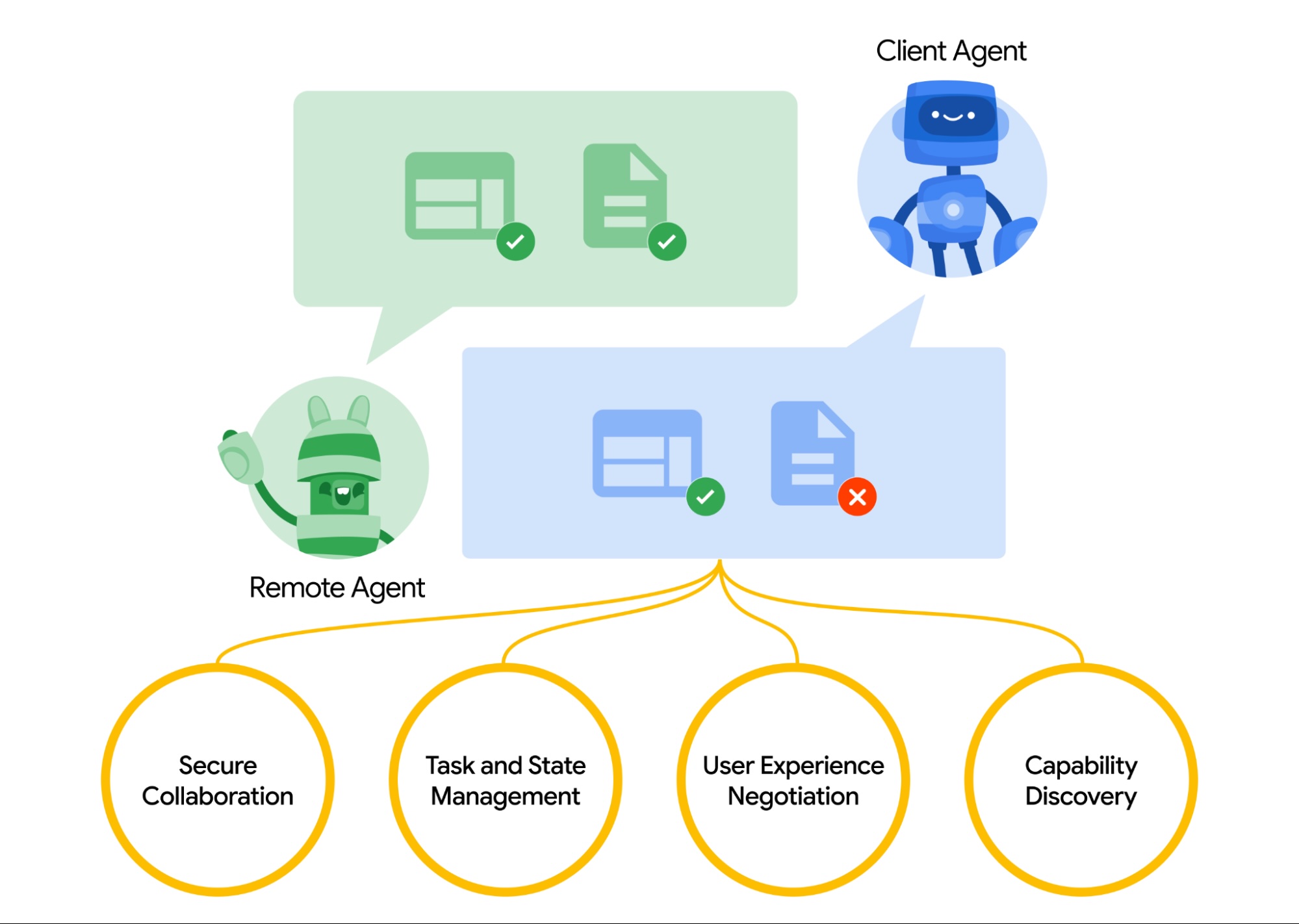Google A2A vs Anthropic MCP: Complementary AI Agent Protocols

The pace of innovation in artificial intelligence, particularly around AI agents, is truly remarkable. As these agents become more sophisticated and integrated into enterprise workflows, the need for robust communication and data access standards becomes critical. Recently, two significant open standards have emerged, sparking considerable discussion: Google's Agent to Agent (A2A) protocol and Anthropic's Model Context Protocol (MCP).
Having followed these developments closely, particularly given Google's A2A launch just a couple of weeks ago (April 9, 2025) and Anthropic's MCP introduction late last year (November 24, 2024), I wanted to share my perspective on their distinct roles and, more importantly, their powerful synergy. While some initial reactions might frame them as competitors, I believe a closer look reveals they address different, yet complementary, layers of the AI agent ecosystem.
Google's Agent to Agent (A2A): Facilitating Collaboration
Google's A2A protocol focuses squarely on enabling inter-agent communication and collaboration. Think of it as the standard that allows AI agents, potentially built by different vendors using different frameworks, to discover each other, understand capabilities (via "Agent Cards"), assign and manage tasks (even long-running ones), and communicate securely across various modalities (text, audio, video).
Key strengths of A2A, from my analysis, include:
- Interoperability: Breaking down silos between agents from diverse sources.
- Task Orchestration: Managing complex workflows involving multiple agents.
- Enterprise Readiness: Emphasis on security and scalability, backed by significant industry partners like Salesforce, Atlassian, and Cohere.
Essentially, A2A provides the framework for a society of agents to work together effectively, crucial for building sophisticated multi-agent systems that can tackle complex, distributed problems.
Anthropic's Model Context Protocol (MCP): Enhancing Contextual Awareness
Anthropic's MCP, on the other hand, addresses a different challenge: standardizing how AI models access external data and tools. Its primary goal is to provide AI models, especially Large Language Models (LLMs), with the necessary context to generate relevant, accurate, and timely responses. MCP acts as a universal connector – often likened to a "USB-C port for AI" – linking models to content repositories, business systems, databases, and development tools.
The value proposition of MCP centers on:
- Standardized Integration: Reducing the complexity and maintenance overhead of building custom integrations for every model-tool pairing (the "MxN problem").
- Improved AI Performance: Directly feeding relevant data boosts the accuracy and speed of model responses.
- Developer Friendliness: Offering SDKs (Python, TypeScript) and reference implementations to accelerate adoption.
MCP is vital when an agent needs to know something specific or do something using an external system – think querying a product database for a customer support agent or accessing a codebase for a development assistant.
The Core Distinction: Communication vs. Context
To put it succinctly:
- A2A is about Agent ↔ Agent interaction. It defines how agents talk to each other.
- MCP is about Agent ↔ Data/Tool interaction. It defines how agents connect to external resources for context.
| Feature | Google A2A | Anthropic MCP |
|---|---|---|
| Primary Focus | Agent-to-agent communication & collaboration | Agent-to-data/tool integration & context |
| Core Problem | Enabling multi-agent systems to cooperate | Providing models with relevant information |
| Mechanism | Protocols for discovery, task mgmt, comms | Standardized client-server data access |
| Use Case | Distributed workflows, complex task orchestration | Context-aware responses, tool usage |
Synergy in Action: Better Together
Rather than viewing A2A and MCP as competing standards, I see them as essential complements. They operate at different, but necessary, levels to enable truly advanced AI systems.
Consider a practical example: an automated corporate travel planning system.
- A user interacts with a primary Travel Coordinator Agent.
- This Coordinator Agent needs to book flights and hotels. It uses A2A to discover and communicate with specialized Flight Booking Agent and Hotel Reservation Agent. A2A manages the task delegation and status updates between these agents.
- The Flight Booking Agent needs real-time flight availability and pricing. It uses MCP to connect securely to the airline's API or a Global Distribution System (GDS).
- Similarly, the Hotel Reservation Agent uses MCP to query the company's preferred hotel booking platform for room availability and rates.
In this scenario, A2A orchestrates the collaboration between agents, while MCP handles the contextual data access each agent needs to perform its specific task. One protocol manages the 'who talks to whom,' while the other manages the 'what information is needed.'
Concluding Thoughts
The emergence of both A2A and MCP is a positive sign of maturation in the AI agent space. Standardizing these fundamental interaction patterns – agent-to-agent and agent-to-data – is crucial for building scalable, reliable, and interoperable AI solutions. While the landscape is still evolving, viewing A2A and MCP as complementary building blocks offers, in my opinion, the most accurate and constructive perspective. Their combined potential promises to unlock significantly more powerful and integrated AI capabilities in the near future.
I'm keen to hear your thoughts – how do you see these protocols impacting your work or the industry trajectory?